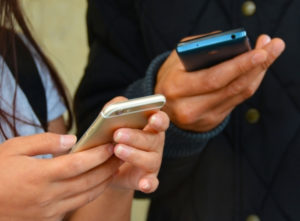Why Social Media Shouldn’t be the Primary Way You Communicate

In the days before Hurricanes Laura and Marco made landfall, social media accounts for many local television stations and broadcast meteorologists featured the two forecast tracks crisscrossing the Gulf of Mexico. At one time, it looked like both storms would make landfall on the same day within a few hundred miles of each other.

Marco eventually made landfall near New Orleans while Laura continued to strengthen and track toward the Texas-Louisiana border. However, days later, outdated graphics showing the two storms tracking side-by-side still populated many social media newsfeeds. Other posts showed Marco tracking toward Texas although it had already made landfall in Louisiana.
While account holders can control what they publish on social media, they can’t control who among their followers will see their posts, and when they will see it. That’s determined by a complex algorithm written into several lines of ever-changing code, stored in a rack of computer servers buried beneath a mountain in North Carolina. Or maybe not. We don’t know! And that’s the point.
Social media shouldn’t be the primary way broadcast meteorologists communicate essential weather information, especially when the details change every few hours, as they do during a hurricane.
A BETTER WAY TO SOCIALIZE
Maintaining active social media accounts is now part of the job description for most broadcast meteorologists, along with the rest of the newsroom. These online outlets provide free self-promotion for the TV station. They offer the opportunity to catch viewers where they are: online. The theory is the more news talent engages with people online, the more likely these followers will watch the news on TV. (Although I’ve yet to see research that verifies that claim.)
Social media allows TV stations to build brand awareness. Meteorologists can use it to build weather awareness. However, the content posted to each account must be accurate, relevant, and timely.
Here are four ways that broadcast meteorologists can communicate more effectively on social media:
✓ Create one dedicated webpage on the TV station website where essential information for specific storms is always posted. Use a simple URL that viewers will remember, like www.tvstation.com/laura. Post detailed forecast discussions on this page, along with links to sidebar stories related to the storm.
✓ Every time the webpage is updated, publish a new post on social media that directs followers to the website where they can find complete, comprehensive coverage. Include just enough text in the social media post to highlight the essential message. Save the longer explanations for the webpage.
✓ Images attached to social media posts should be designed to maximize the engagement for each platform. Use a graphics tool like Canva or other similar apps to create images that fit the format of each platform. Add large text to the graphics to grab followers’ attention while they scroll through the newsfeed on their phones. Include the station logo to remind followers where to find additional information.
✓ Finally, consider deleting old social media posts when updating the forecast during an ongoing weather event. Many people don’t realize that content on Facebook, Instagram, and Twitter is not displayed in chronological order. Deleting old posts is the only way you can prevent outdated information from being distributed on your accounts. This might affect engagement scores, but at least the information pushed out to followers will be current. Yes, every post has a timestamp and most include some reference to timing, however, those timestamps are often too small and/or easily overlooked by followers.
THE REAL VALUE OF SOCIAL MEDIA
Social media can help broadcasters form a relationship with viewers. Use it to demonstrate expertise and share personality. Eventually, followers will learn to trust you and seek out your guidance during other weather events. And maybe they’ll watch you on TV.
READ MORE: 3 WAYS TO MAKE INSTAGRAM POSTS MORE ENGAGING
There’s an old saying in TV, “You’re only as good as your last newscast.” Meaning the last newscast is the one people will remember. That’s true with social media too. You’re only as good as the last post your followers read.
You build your reputation one storm at a time. You can also destroy your reputation if the information distributed on social media is no longer valid. Even worse, it could cause people to take unnecessary action or put themselves in harm’s way. Don’t let your followers down when they need you most.
Tim Heller is an AMS Certified Broadcast Meteorologist, Talent Coach, and Weather Content Consultant. He helps local TV stations and broadcast meteorologists communicate more effectively on-air, online, and on social media.
Read more News & Insights from HellerWeather
